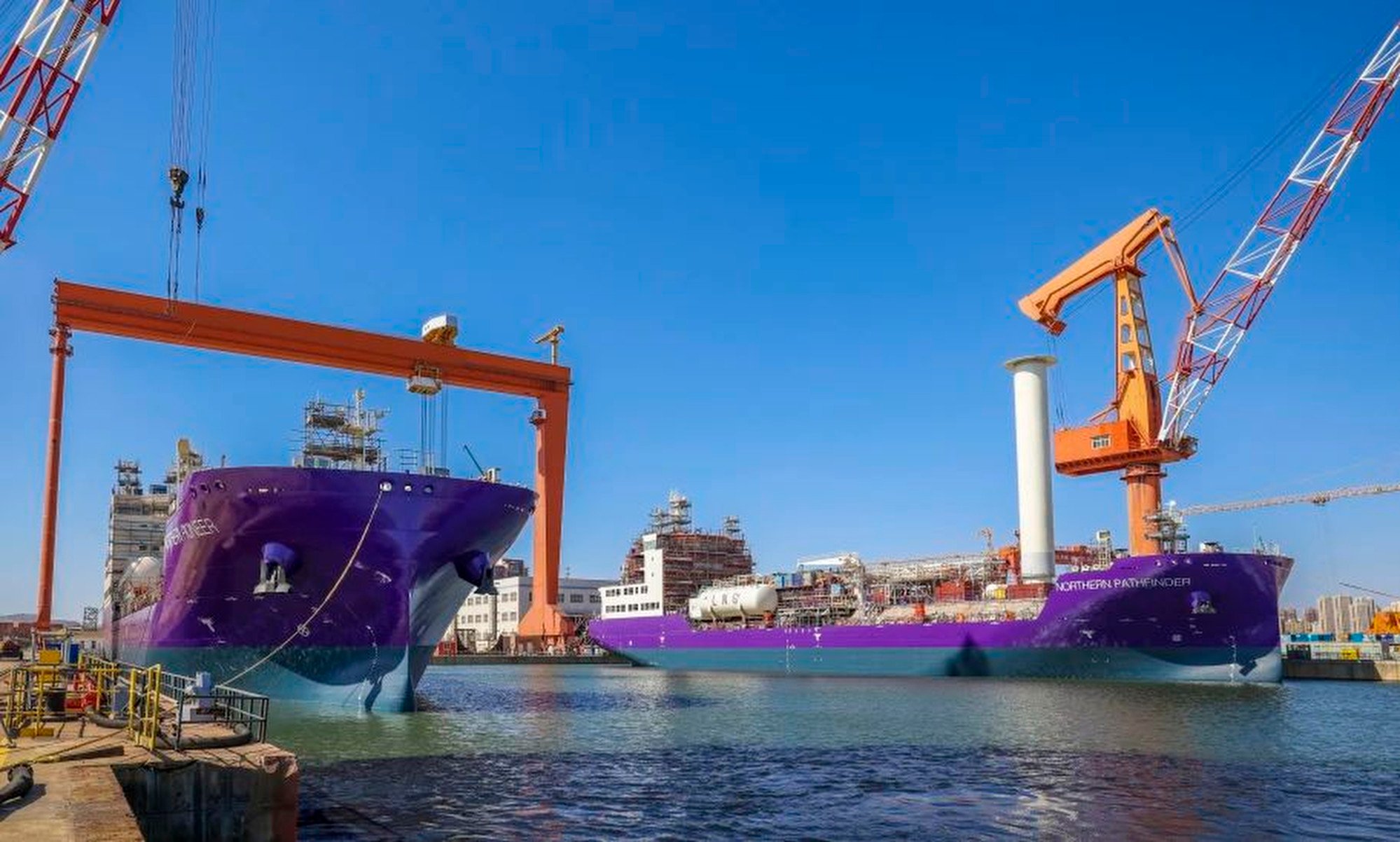Dalian Shipbuilding Industry (DSI), a unit of one of China’s biggest shipbuilding conglomerates, has commenced the construction of a third specialist vessel ordered by Northern Lights, which will transport liquefied carbon dioxide from emitters to sites for permanent geological storage.
Northern Lights is developing the world’s first cross-border carbon dioxide transport and storage infrastructure and has ordered four such vessels from DSI’s subsidiary Dalian Shipbuilding Offshore (DSO).
“It will be deployed to extract industrial emissions as part of Europe’s carbon capture and storage plan for achieving its medium term decarbonisation goal,” the shipbuilder said. “The gas will be sent to a receiving terminal on the west coast of Norway, treated and injected some 2,600 metres under the sea floor for permanent storage.”
DSI is a unit of Shanghai-listed China Shipbuilding Industry. China has the world’s largest shipbuilding industry. Northern Lights is a joint venture founded in 2021 by Norway’s state-controlled energy firm Equinor, British multinational oil and gas company Shell and France’s TotalEnergies.

The world needs to capture and store some 6 billion tonnes of carbon dioxide emissions at factories or directly from the atmosphere by 2040, and 8 billion tonnes by 2050, to achieve net zero greenhouse gas emissions by mid-century, according to the International Renewable Energy Agency.
Currently, only 0.4 million tonnes are captured each year, due to high costs and lack of infrastructure.
The world will need 55 liquefied carbon dioxide carriers and 48 export and import terminals by 2030, according to research firm Rystad Energy, which forecast that over 90 million tonnes of captured carbon dioxide will be shipped by the end of the decade.
Norway, Europe’s largest oil and gas producer, is at the forefront of efforts to promote commercial carbon dioxide storage.
The Norwegian government has launched research and innovation support programmes dedicated to carbon capture and storage with an eye towards halving greenhouse gas emissions by 2030 from 1990 levels.
In June 2023, state-owned China National Offshore Oil Corporation commissioned the country’s first offshore carbon capture and storage demonstration project. It aims to store around 1.5 million tonnes of carbon dioxide under the seabed after capturing it from one of the country’s largest oilfields over five years.
In 2022, the company teamed up with Shell, ExxonMobil and the Guangdong provincial government to conduct a feasibility study to build China’s first large-scale offshore facility near Shenzhen to capture and store carbon emissions from chemical plants.
Construction of the Northern Lights terminal began in 2021, with the first phase expected to be completed later this year, offering an initial annual storage capacity of 1.5 million tonnes of carbon dioxide over 25 years. The capacity could be raised to as high as 7 million tonnes by 2026. At the initial stage, it is expected to handle emissions captured from a cement factory and a waste-to-energy plant in Norway.

